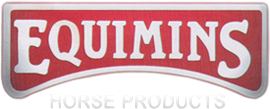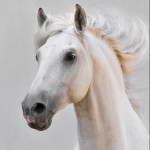What’s in a joint?
We talk a lot about joints and joint health at Equimins – in fact, we have a large range of joint products that help to support and maintain joint health and condition. But what’s in a joint and what areas inside the joint do we need to help support to maintain soundness and health?
A joint happens where two or more bones meet – if you remember your biology lessons at school, you’ll know that there is more than one type of joint, but that’s not too much of an issue as, although the different types have different ranges of movement, the make up is similar. A joint is made up of many elements – you have the bones that meet, the cartilage that covers the end of the bones, the synovial fluid, the joint capsule, the ligaments, the muscles….here’s a quick guide…
The cartilage covers the ends of the bones. It’s smooth, helps to absorb shock and helps cushion the bones when the horse moves around.
The capsule surrounds the joint and helps to maintain a ‘safe’ range of movement – along with other parts of the joint. The capsule also houses the synovial fluid which acts as a lubricant inside the joint – much like moving parts in an engine that are lubricated with oil to help everything move around smoothly.
Ligaments attach from bone to bone and help prevent over extension and dislocation.
Tendons attach to the bones and the muscles to facilitate movement when the muscles contract and relax.
Of course, joint issues can be caused by a number of reasons, and any lameness should be investigated by a vet. Some soundness issues are caused by injuries, whether knocks and bumps or wounds and infection, sprains and strains, many creep up in old age due to wear and tear and some issues are caused by degeneration. Some horses are more susceptible to some kinds of joint issue than others, so competition horses, who execute work at a higher level and put their joints under greater stress than, say, a happy hacker, might be more susceptible to strains and sprains and also some forms of arthritis.
Not all joint issues can be prevented, but correct care after competition, being aware of the demands on your horse’s joints, being vigilant and identifying problems quickly, and considering supplementing the diet with key ingredients can help support maintenance.

 Equimins specialises in producing natural horse supplies, products and supplements for the major areas associated with caring for a horse. All products are proudly made in the UK and excellent specification quality products are of paramount importance. Using this blog we want to share some of the knowledge we have gained through nearly 30 years of experience.
Equimins specialises in producing natural horse supplies, products and supplements for the major areas associated with caring for a horse. All products are proudly made in the UK and excellent specification quality products are of paramount importance. Using this blog we want to share some of the knowledge we have gained through nearly 30 years of experience. 


